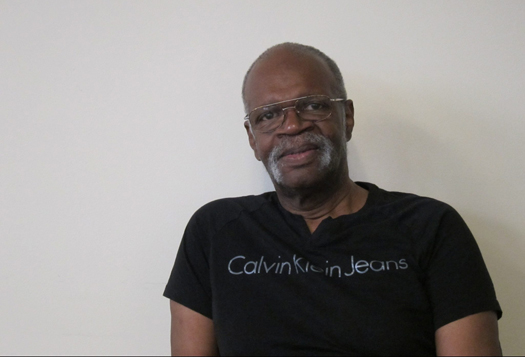Staying Involved Helped One Man Out of Homelessness, and Empowers Others

Greg Francis serves on the Planning Council for Health Care for the Homeless Network of PHSKC: “I had unmet health needs and only after I started to take care of myself, did I have the energy to get out.”
Over the past decade, Greg Francis has moved into stable housing after living unsheltered—and he still remembers vividly what it was like to live unsheltered.
“It was tough,” he says. “It felt like someone else was controlling my life. So, I came up with a plan.”
He partially credits activism, such as through his participation on Public Health – Seattle & King County’s Healthcare for the Homeless Network (HCHN) Planning Council.
Greg’s journey began in Long Island, NY. Feeling dissatisfied with life on the East Coast, he made his way West and ended up in San Francisco, where he first experienced homelessness. He found himself increasingly isolated and dealing with mental health issues, while remaining unsheltered.
On advice of his case managers, he became more involved in advocating for the needs of people experiencing homelessness. “What was really helpful in my development was being involved in the greater community,” he says, “with people who were involved in solutions to address homelessness.”
He found himself particularly motivated to address the intersection of health and homelessness. “You need to put a lot of energy to find housing,” he says. “I had unmet health needs and only after I started to take care of myself, did I have the energy to get out.”
Moving to Seattle, resisting isolation
He continued to serve as an advocate in numerous coalitions addressing the needs of people experiencing homelessness in San Francisco. But following a personal tragedy, Greg set out for Seattle.
And soon after he arrived, he found ways to remain active and interactive in the community. That helped him eventually move into supportive housing and then his own apartment. He now serves as co-chair on HCHN’s Planning Council.
From Greg’s experience, it’s important for people who are homeless to resist isolation and remain connected with the community at large. That’s one way to avoid developing a self-image that says they are fundamentally a homeless person.
“We need to find a place where people can engage on their terms, a place they are invested in. That’s my goal,” he says.
A role for everyone
There’s also a role for the community at large, all the residents of King County—by helping to create and support those places where people can have meaningful and ongoing interactions and relationships.
Locally, the Seattle/King County Coalition on Homelessness offers multiple ways to volunteer, including links to their member organizations. Online, the National Health Care for the Homeless Council provides an advocacy toolkit, fact sheets, and other resources for anyone who wants to promote comprehensive health care and secure housing for all.
According to All Home King County’s 2018 Count Us In report, there were an estimated 12,000 people experiencing homelessness in King County on January 26, 2018. Though Greg has faced many obstacles in his journey out of homelessness, he continues to fight for the needs of the thousands still struggling.
This article originally appeared in Public Health Insider, a Public Health—Seattle & King County publication, on June 21, 2018.
![AgeWise King County [logo]](https://www.agewisekingcounty.org/wp-content/themes/agewisekingcounty/images/logo.png)